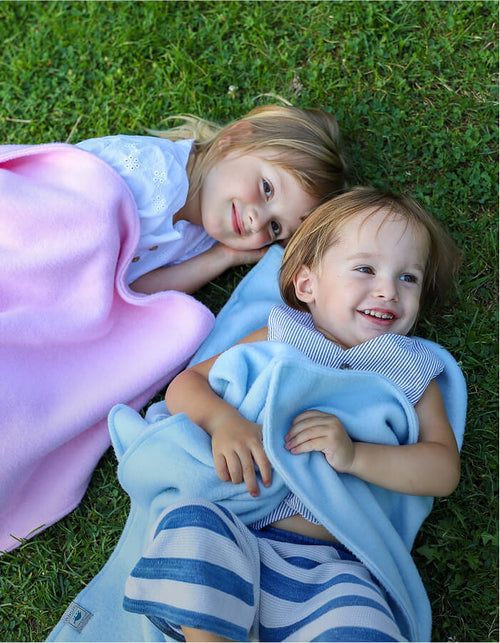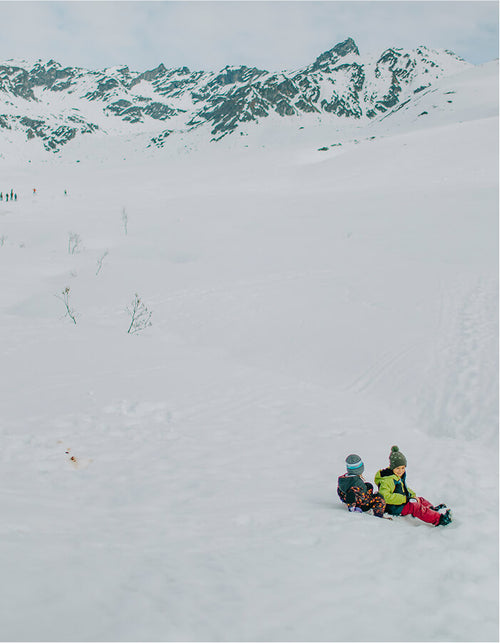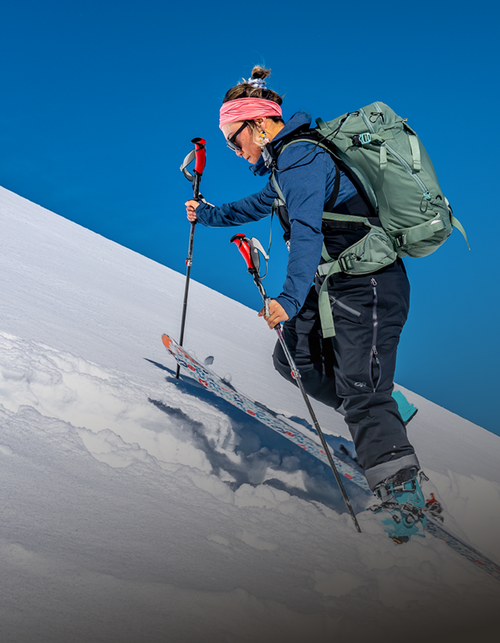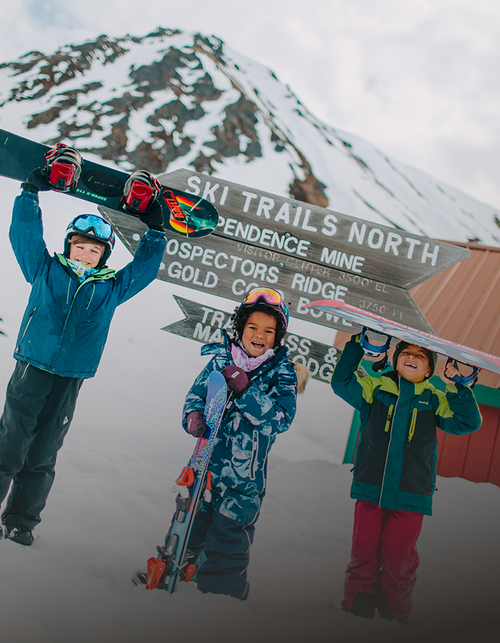Trail Running Safety: Fight Your Fears with Awareness & Preparation

- by Shelby Farrell @shelbzzf
As we post this blog, our Ambassatur Shelby is preparing to run The Speed Project solo. A casual ~290 miles from the Santa Monica Pier in Southern California to Las Vegas. Be sure to follow her adventure.

Fact: My 6 foot 3 inch, powerfully built husband has a much higher chance than me of fighting someone or something off if they were to attack him while running. Although capable of more than I have yet to dream, there are certainly fights that I would not win. Being aware of this is step one in my very unofficial guide to trail safety. I am an ultra positive ultrarunner, I do not go about my training runs thinking I am going to get mugged (enjoy the sticky gel packets sucker!), but it’s about having a glimpse of preparation for the “anything” in the phrase, “anything can happen out there.” The longer the run, the more opportunities for “anythings.”
Should you carry defense mechanisms while running?
I have. I especially will when venturing in long stretches of wilderness solo. There are three items I typically make sure are easily accessible in my running pack. When running with my husband, Jason, he’s often carrying one or two of these items too. (That goes to say that safety is important regardless of gender). Due to the convenient size, I often stick a little pepper spray canister and pocket knife in the front of my pack. I’ve held that pocket knife out twice when feeling threatened by larger animals in my proximity. I don’t know if I could stab an attacker effectively and quick enough before they bite off my head, but in those freaky moments I have thought, “If I can take out their eyes, I probably have a chance.” I’m pretty sure that is what all of the children’s stories about dragons and large mythical creatures teach you at least. Hey, if it works for them…
When getting deep off of the grid I carry a can of Counter Assault Bear Deterrent Spray. Carrying bear spray feels powerful. It is basically a large concentrated dose of pepper spray, with a sprayer that allows you to throw up a wall of it. We learned about Counter Assault when we visited Montana for the first time. You’re not supposed to spray it at humans, but I believe if I was being seriously threatened, emptying out that canister would help save my life. Knowing this (and how to use it properly) are solid confidence boosters.
Is it safe to run at night?
After completing and attempting several unsupported Fastest Known Times (documented speed records on popular trails) that went into or through the darkest parts of the night, I was questioned a lot about if I got scared while running alone in the woods at night. Sometimes. Sometimes you hear things that sound convincingly like other things. As a kid I lived on a long dirt road that turned into a power-line path. I used to have so much fun walking down it long after sunset. Test one was getting to the first gate, which was about a quarter mile away from the last house on the street (there were only three houses on the road, ours being the middle one). Passing the first gate was riveting. Getting to the second gate, heroic. As an adult thinking about my childhood exploration in that forest, there is a good chance nobody would have heard me scream out there. But also, realistically, what possibly could I be screaming about? There obviously are horrifying things that can happen, but what is the true percentage of them happening, and at what point do we let that dictate how we entertain ourselves? Our imaginations are our worst enemy in these situations. For that reason, I am going to give you a super controversial piece of advice when it comes to running alone at night… music.

I suggest music because it helps prevent you from focusing on every bunny’s startled hop. The key to your trail safety is how you decide to play the music. You have a few options with music, some less sacrilegious to certain breeds of runners than others. My personal favorite option is to run with open ear headphones. My favorite is the Apex model by AfterShokz. These headphones use bone conduction audio technology, allowing your ear-hole to be completely open (also convenient if you have an itchy ear while running with headphones). By keeping your volume mellow, you can let your tunes help you get into a zen state while still maintaining a level of awareness of your surroundings. Carrying a portable speaker can also help provide a groove while keeping the airwaves open. I had a bonus theory that carrying audible music helped alert animals that I was coming. Accidentally startling a mama predator is not something I would want to experiment with. They say when traveling in bear country you should talk to the bears, “Hey bear, hey bear!” Is it possible that music can create the same effect? On the flip side, I think I have also heard that sharks are attracted to heavy metal… So who knows about any of this logic (don’t look at me).
That being said, loud music on the trail can annoy people and take away from the peacefulness of the experience. However, it’s your time out there. The final music option is your classic in-ear earbud headphones. My concern with these is that they block out a lot of the outside noise. You need to be able to hear the noises that are actually concerning - being totally oblivious is foolish. I’ll leave it with this; there is a fine line between “feeling safe” and actually “being safe” and that line has a lot to do with your personal awareness. Do what is right for you.
What are the best navigation tools for trail running?
After attempting an out and back traverse on Northern California’s 54-mile (one way) Lost Coast Trail, I realized I needed to step up my game with navigation, particularly GPS tracking. I ended up making it only one way in this mission. Around mile 20 I embarked on 34-unsupported-miles in thick negative cell coverage terrain. My pace predictions were off, and I hit the turnaround probably somewhere around four hours later than my crew was expecting me. The two individuals waiting for me were in full blown panic mode. Jason let his imagination and staring at the black abyss of the trailhead conjure up some scary outcomes. Apparently when it is so dark that you can’t see your buddy sitting next to you, strange things happen. You know what could have prevented this? The Garmin InReach mini. It’s not a cheap device, but it can be the difference between life, death, and a panicked crew chief. It looks like a mini walkie talkie and is perplexingly lightweight. It can be used to track a runner in live time. The beauty of this is your loved ones can tell if you are still moving forward. Additionally, you can send messages, it has an SOS button, and works off of satellite connection, not the broadband that our phones are operating off of– which from everyday life we know is a spotty network. This device does require a subscription. Honestly, the price and subscription plan prevented me from pulling the trigger on this purchase for a long time— but the peace of mind it gives my husband and the ability to live track a Fastest Known Time effort are worth the obnoxious price tag.

Another crucial component of trail safety is knowing your trail. Investing in a GPS watch with the ability to download a route into it is a game changer, especially when that watch boasts of 140 hours of battery life. I’m talking about the COROS VERTIX 2. While exploring a 42-mile chunk of the John Muir Trail (JMT) my phone died. Classic. I usually can plug it into the battery pack that I use to operate my Kogalla (an extra bright running light), but that battery had needed every ounce of juice to get me through the night (and even that wasn’t enough for this particular trek). Thankfully, I had the map downloaded in my COROS watch. The final 15 miles I navigated solely off of the watch, and gratefully so! In hindsight, I probably should have been using the watch the entire time, and then perhaps my phone battery would have lasted longer. Prior to this experience, I had a perception that using a downloaded map in an app on my phone felt more comfortable and easier to read. Turns out using the navigation confidently on the watch just took a little practice. There were a lot of silly areas of improvement made visible on the JMT… getting adequate sleep prior to attempting massive efforts in elevation being a solid example. I hallucinated so hard in the final stretches of this run. Rocks morphed into yurts, some had people sitting outside of them, an animatronic humanoid koala character, followed by a pirate… having a watch to keep me on track and give me an accurate read of my mileage throughout the entire journey provided the level of assurance needed to get me out of that beautiful mess.
Having the right supplies to be comfortable can make an adventure a million times better.
This means layers, food, and a legit plan around hydration. It’s not worth messing around, especially on a rugged training run. I can understand how in a race environment you might consider packing lighter, where you may feel that every avoided ounce contributes to your success and aid stations are abundant. On the other hand, when training, I personally don’t care if my pack is heavy. I would rather have the option to put that extra long-sleeve on when the run takes hours longer than anticipated and I end up in the dark. More importantly, in these situations, a light. I wish I could underline “light” six times. Using a phone light to find your way back to your vehicle is totally doable, but not recommended. This is all I am going to say about the importance of adequate lighting… if you don’t have it, you may end up here:

Let’s talk layers!
Layers don’t have to just include your shirt(s) and short(s) or pants, in fact, you can layer your cold-weather headwear accessories for warmth, too. They rate high on the conveniently packable list too. For example, you’ll often find me running with two to three Turtle Fur Totally Tubular Neck Tubes. On the JMT as the temperature dropped throughout the night I had one tube that I had my head popping out of, with the excess covering my head, cheeks, and neck. My second tube was around my neck, pulled up to cover my nose and mouth. My third tube was placed around my ears in thick headband mode. It dropped to 21 degrees this particular summer evening. I was not prepared to be that cold, but my Turtle Fur had my neck and head warm — which in turn helped the rest of my body feel many degrees warmer mentally and physically. Later that summer I would run Mount Whitney, the tallest mountain in the contiguous United States, making a similar rookie mistake… I under packed layers, but was yet again saved by my Turtle Fur trio. The tube, on tube, on tube look is definitely a head turner. The crazier the patterns the better in my opinion. As the sun warms the Earth, you can peel back those TF layers one by one.

Just be smart.
Trail running requires a level head and an appreciation for safety. Anytime you’re exploring outdoors, unfortunate circumstances can arise. How are you going to react or quite literally pivot when you see a mountain lion’s eyes piercing you through the blanket of the night? I definitely did not write this to scare you. I honestly feel a little funny writing it because I am not the individual that pre-plans for worst-case scenarios. I prefer to live in more of a blissful, rose-colored glasses default mode, especially when on the trails. I wrote this to tell you that you can do it. You’ve read this far. Instead of letting your fears prevent you from reaching new heights, turn-up your awareness and preparation dials. Not to mention, I’d rather die at the hands of a mountain lion than in a car crash. I realize this is a morbid thought, but it’s one that I’ve found solace in when scared in nature alone.

PS. Jason (the husband) chuckled because I made zero mention of a first aid kit. Have it be known that I carry tiny sample containers of Squirrel’s Nut Butter (an anti-chafe balm that is also great on your face while getting wind blasted), an SPF 50 sunblock stick, chapstick with SPF (make sure it has SPF [burnt, cracked lips really hurt]), pieces of extra sticky tape (to treat hot spots, blisters, or flesh wounds), and a clear ziplock baggy with wipes. Always pack out what you pack in! I really should have started this article with a disclaimer that I am not Bear Grylls, please take all of my advice with a shiny grain of mica.
About the author:
Shelby Farrell, @shelbzzf on Instagram (go give her a follow), is a SoCal based ultrarunner and Turtle Fur Ambassatur. She’s addicted to challenging her human potential by using her mind and body together in the act of running. With a goal of living her life to the absolute fullest, running is her outlet to do so. She has two cats, Todd and Felicia, and totally believes in aliens.










